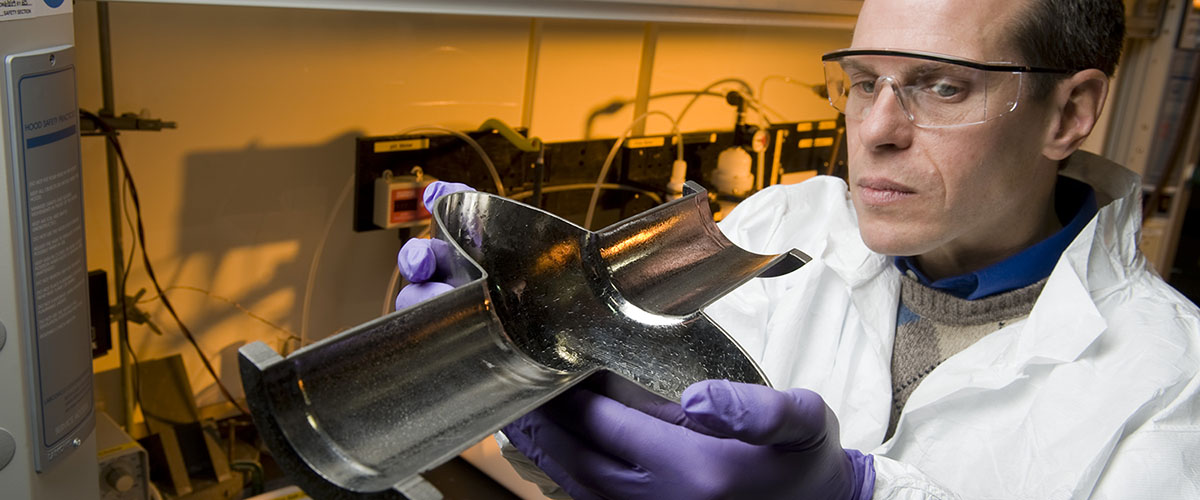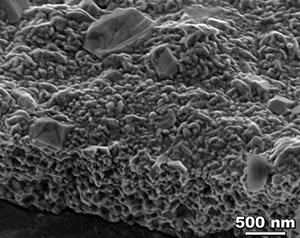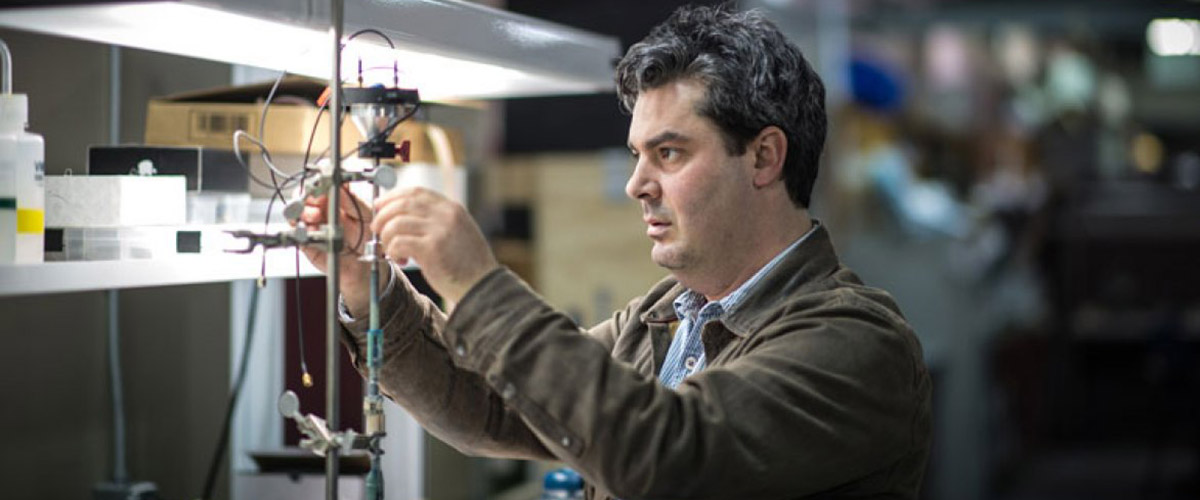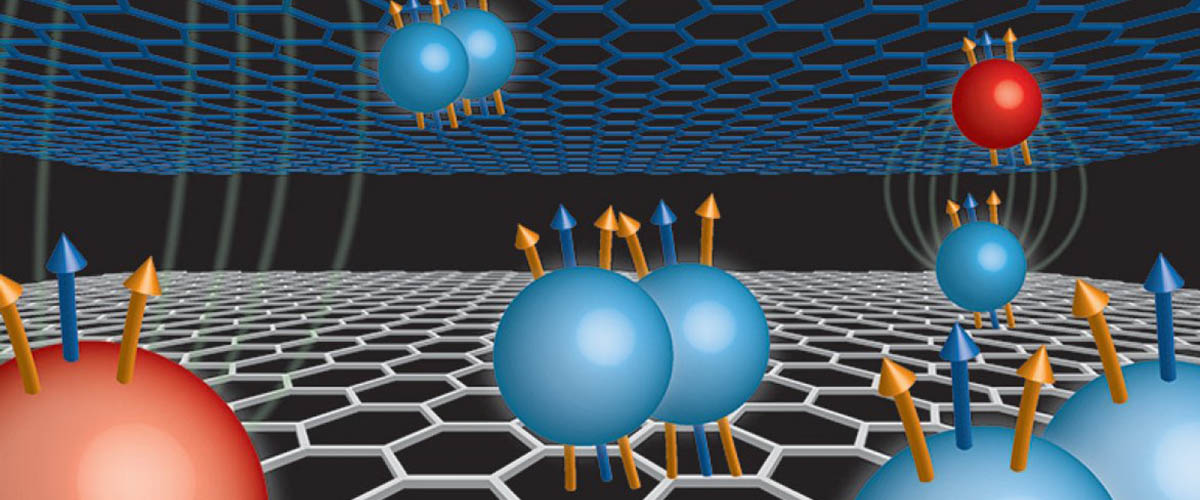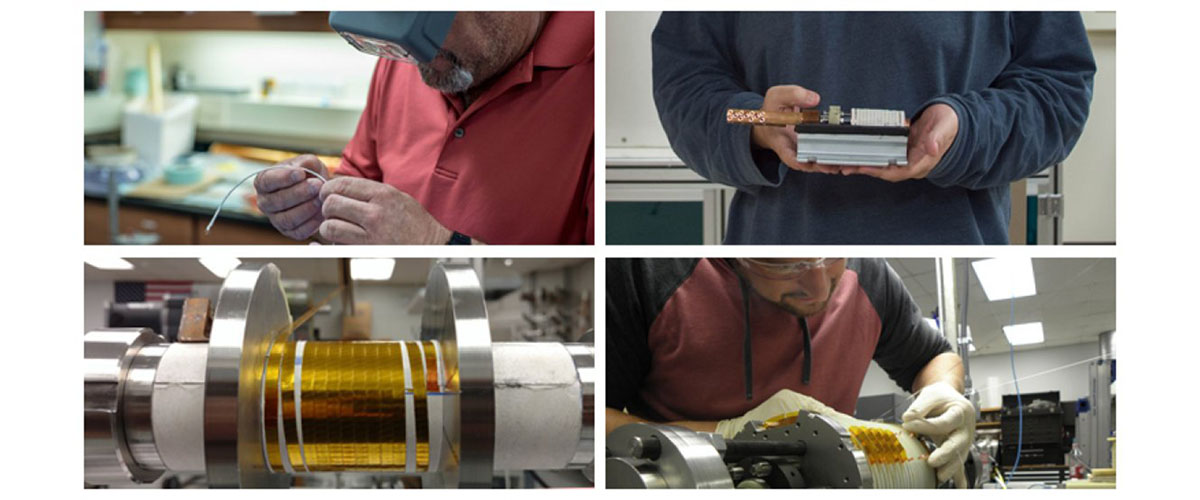Contact: Lance Cooley
TALLAHASSEE, Fla. — When you think "particle accelerator," you think big. CERN’s Large Hadron Collider (LHC), for example, spans two countries, features a tunnel more than 16 miles (27 km) long, employs thousands of scientists and requires a budget of $1 billion a year.
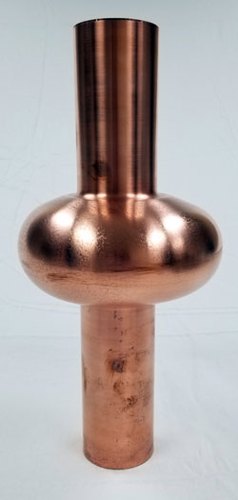
This copper RF cavity, about 1 foot (30 cm) long, would be for a small-scale particle accelerator about 3 feet in length (about 1 meter).
Image credit: DSM South / Bailey Tool
Turns out, particle accelerators need not be so massive. In fact, proton-smashing technologies initially developed to reveal the mysteries of the universe are being down-scaled to solve less lofty, but no less important, problems related to environment, health and safety.
The National MagLab is playing a role in a nationwide effort to make human-scale particle accelerators for a host of applications. With a $1 million grant from the U.S. Department of Energy, scientists at the lab's Applied Superconductivity Center (ASC) are developing a key component of these slimmed-down accelerators called radio frequency (RF) cavities.
While big boys (like Europe's LHC, the retired Tevatron at FermiLab outside Chicago and the SLAC National Accelerator Laboratory in California) have grabbed the science headlines with flashy discoveries of top quarks and Higgs Bosons, there are actually tens of thousands of particle accelerators of different designs, uses and sizes worldwide. That’s because high-energy particles are handy for all kinds of things.
"They can be used for everything from zapping cancer cells to curbing pollution to scanning cargo for contraband," said Lance Cooley, an ASC scientist and professor at the FAMU-FSU College of Engineering who is leading the RF cavity research.
Whether made of protons photons, electrons or ions, beams generated by accelerators can break up unwanted molecules like coal flue gases or bacteria; catalyze processes helpful in industry and manufacturing; and identify nefarious stowaways hidden in shipping containers. The list of potential applications could be as long as SLAC's nearly 2-mile linear accelerator.



